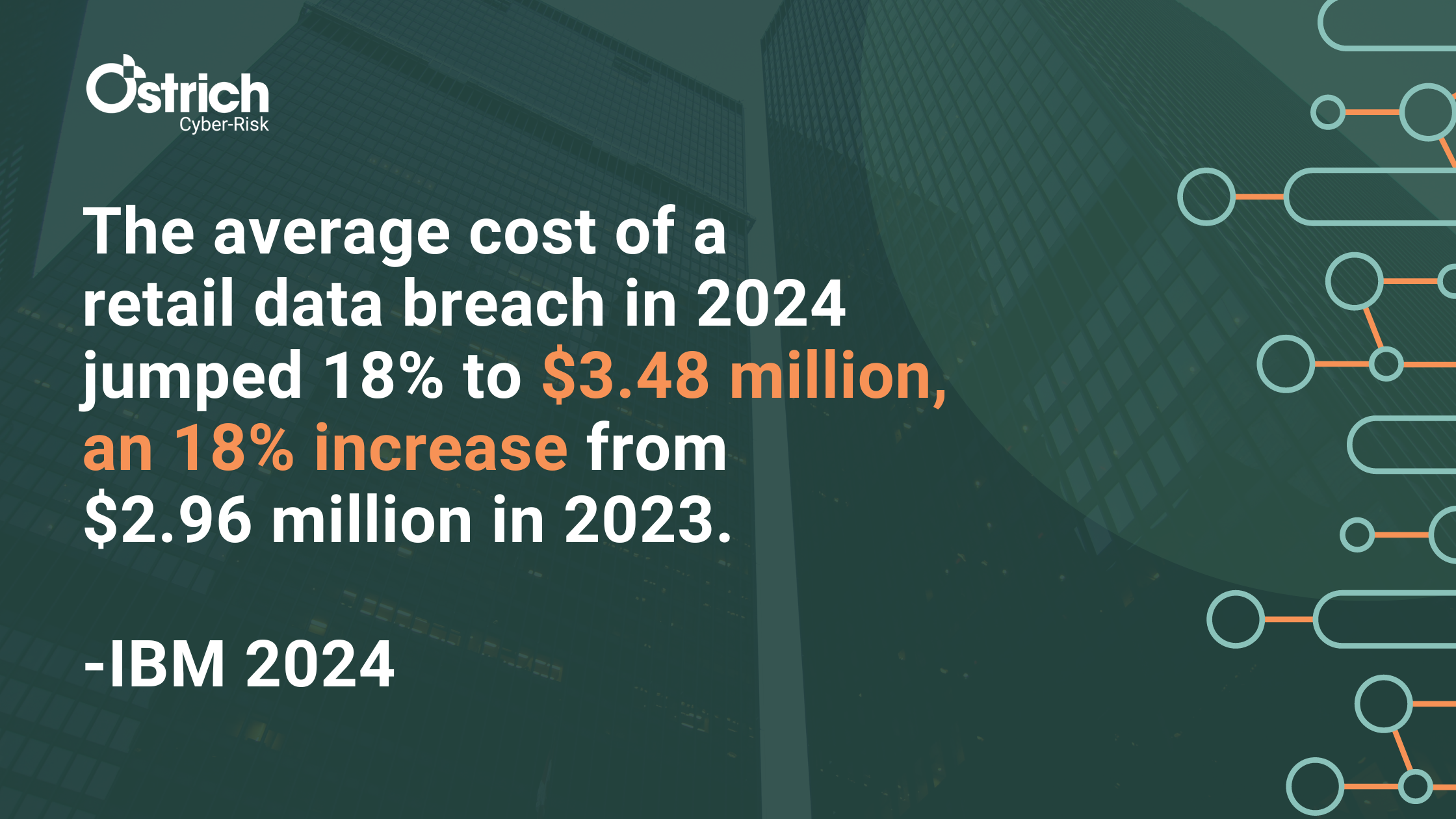Justifying Cybersecurity Budgets: A Guide for Retail
Justifying Cybersecurity Budgets: A Guide for Retail
In retail, securing adequate budgets for cybersecurity initiatives can be a significant challenge. Despite the increasing number of cyber threats targeting this sector, many retail organizations struggle to align their cybersecurity needs with business goals and secure the necessary funding. According to the annual IBM "Cost of a Data Breach Report," the average cost of a retail data breach in 2024 jumped 18% to $3.48 million, an 18% increase from $2.96 million in 2023. This statistic underscores the critical need for robust cyber risk management and security measures.
The Challenge of Justifying Cybersecurity Budgets and Why It's Difficult:
Complexity of Cyber Risks: Cyber threats in retail are multifaceted, involving both online and offline environments. Decision-makers often find it challenging to grasp the technical nuances and prioritize these risks without clear, contextual information.
Lack of Tangible Metrics: Traditional financial metrics don't always apply to cybersecurity. Retail leaders are accustomed to making decisions based on clear ROI calculations, which are hard to produce for preventive security measures.
Communication Gaps: Cybersecurity professionals speak in terms of threats, vulnerabilities, and attack vectors, while non-technical stakeholders focus on business growth, cost efficiency, and customer experience. They may not understand the details of cyber threats but are very concerned about risks to revenue, regulatory penalties, and customer trust. Bridging this gap requires translating cyber risks into business risks they can relate to.
Competing Priorities: In an environment where resources are limited and every department is vying for funding, it can be tough to make a compelling case for cybersecurity over other pressing retail needs tied more directly to revenue.
Four Actionable Steps to Justify Your Cybersecurity Budget
Cyber Risk Quantification
Start by quantifying your cyber risks in financial terms. This involves assessing potential impacts on revenue, customer trust, and regulatory compliance. By presenting cyber risks as potential financial losses, you make it easier for decision-makers to understand the urgency and importance of investing in cybersecurity.
Align with Business Goals
Align your cybersecurity initiatives with the broader goals of your organization. Identify how securing your digital and physical assets supports objectives like enhancing customer trust, maintaining regulatory compliance, and sustaining competitive advantage.
Implement Efficient Risk Controls
Use tools to map out the controls that most effectively reduce your identified risks. Focus on measures that offer the best return on investment in terms of risk reduction.
Improve Communication
Develop a clear and compelling narrative that explains your cybersecurity strategy in business terms. Use case studies, analogies, and simple metrics to illustrate how cybersecurity investments protect the organization's bottom line.
Securing cybersecurity budgets in the retail industry is challenging, but it starts with framing risks in financial terms, aligning security initiatives with business objectives, prioritizing the most effective controls, and enhancing communication with stakeholders. These elements are critical to gaining the necessary buy-in and demonstrating the value of investing in cybersecurity.
If you’d like to learn how we can help, schedule a demo with one of our experts.


